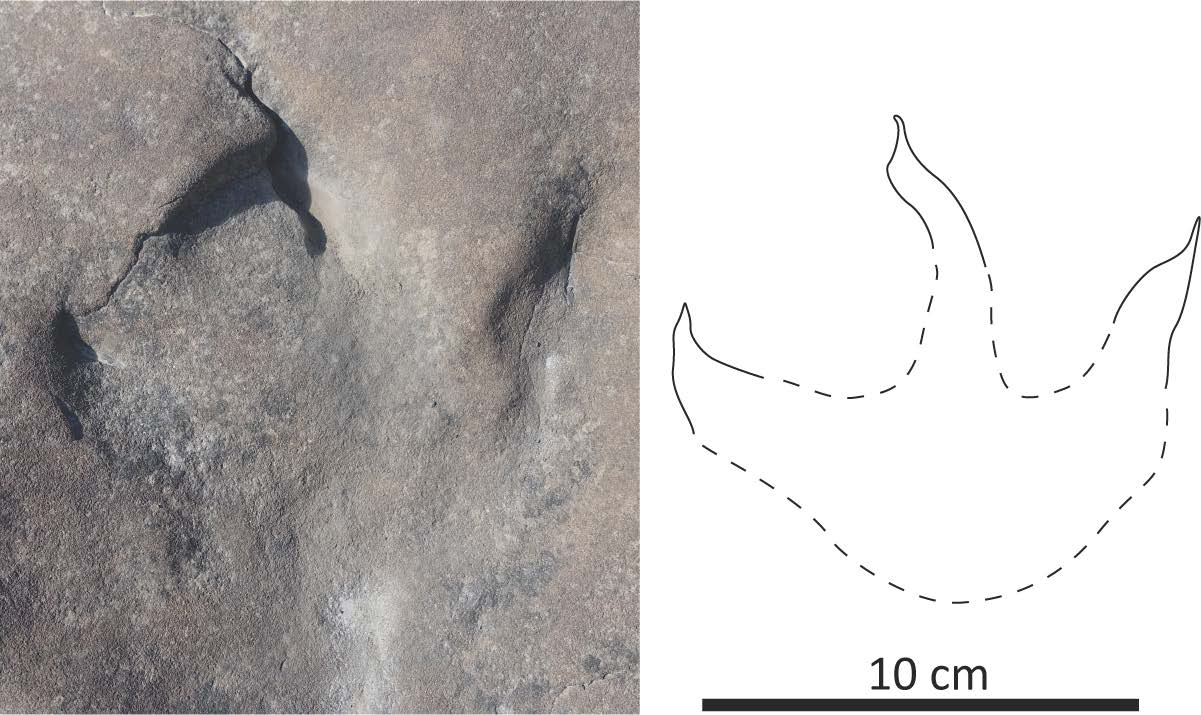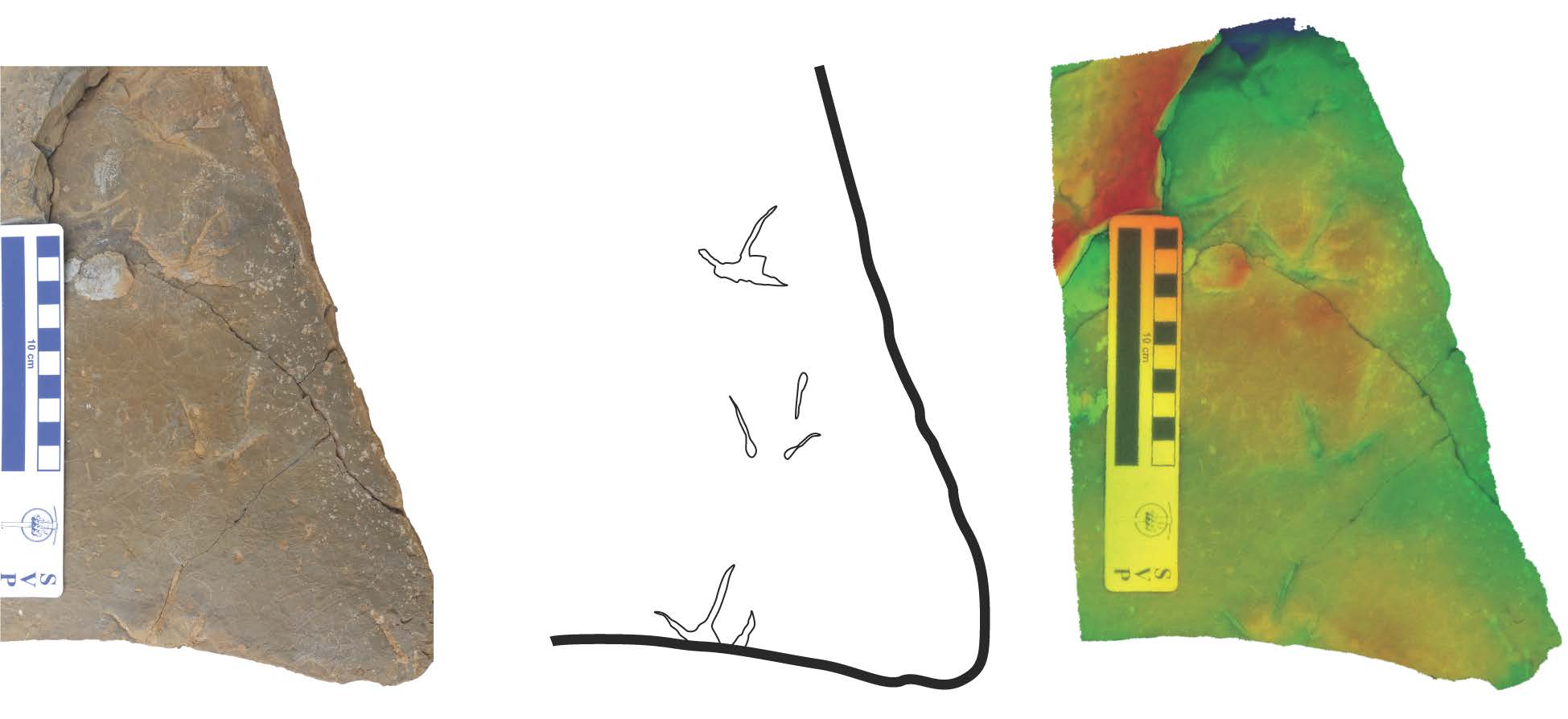A huge hoard of dinosaur footprints, which could be up to 100 million years old, has been unearthed in northwestern Alaska.
The tracks were discovered in the Coke Basin of Alaska’s Nanushuk Formation, which dates back roughly 94 million to 113 million years. Approximately 75 track sites were found there, alongside fossilized plants, tree stumps, and other evidence of dinosaurs, during 2015-2017 excavations.
“This place was just crazy rich with dinosaur footprints,” lead author Anthony Fiorillo said in a statement, including one 365-meter (1,200-foot) stretch of ancient forest, with upright trees, leaves on the ground, and fossilized feces.
“It was just like we were walking through the woods of millions of years ago.”

Theropod tracks.
Image courtesy of Fiorillo et al., Geosciences 2024.
So well preserved were the footprints that the team were even able to work out what types of dinosaurs they belonged to. Interestingly, the majority (59 percent) were created by bipedal plant-eaters, followed by four-legged plant-eaters at 17 percent. Birds accounted for 15 percent of the tracks and non-avian, mostly carnivorous, bipedal dinosaurs made 9 percent.
Besides learning about the dinosaurs stomping about Alaska in the mid-Cretaceous, the findings at the Nanushuk Formation could help answer a few questions surrounding animal migration some 100 million years ago.
“What interested us about looking at rocks of this age is this is roughly the time that people think of as the beginning of the Bering Land Bridge – the connection between Asia and North America,” Fiorillo explained. “We want to know who was using it, how they were using it and what the conditions were like.”

Avian theropod tracks.
Image courtesy of Fiorillo et al., Geosciences 2024.
They could also help shed some light on the climate of the mid-Cretaceous period, which could be beneficial as we deal with a climate crisis in the present day.
“The mid-Cretaceous was the hottest point in the Cretaceous,” co-author Professor Paul McCarthy added. “The Nanushuk Formation gives us a snapshot of what a high-latitude ecosystem looks like on a warmer Earth.”
Carbon isotope analysis of some of the wood samples revealed the region would have been much wetter during the mid-Cretaceous, receiving on average 178 centimeters (70 inches) of rain a year. This increased precipitation is consistent with the global pattern associated with the Cretaceous Thermal Maximum – when average global temperatures were significantly higher than they are today.
“The samples we analyzed indicate it was roughly equivalent to modern-day Miami,” said Fiorillo of the warmer and rainier Alaskan climate. “That’s pretty substantial.”
The site was also around 10 to 15 degrees latitude farther north in the mid-Cretaceous than it is today.
This isn’t the only dino track discovery in Alaska of late. Just last year, a vertical lasagne of footprints was unearthed in Denali National Park, which researchers dubbed a “dinosaur coliseum”.
The study is published in Geosciences.
Source Link: Fossil Tracks Reveal Dinosaurs Stomping Around Alaska 100 Million Years Ago